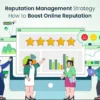How should you gather, share and implement your customer feedback that would eventually skyrocket your business’ prosperity enabling your customers to succeed?
Boost your growth with smart feedback! 🌟
Discover our strategy guide now! 🚀.Start now!
Brian Halligan, who is now the CEO of America helps understand how customer feedback can be a valued asset for your business as it can make you grow multi-folds. His biggest achievement is helping Hubspot grow from nothing to publicly-traded value at almost a value of $6.5 billion with some 56,500 plus customers spanning over 100 countries. According to Brian:
“Feedback is the breakfast for champions.”
If we are aware of what is right, we can create a better life out of it and create more. If we are not aware of what is wrong, we can’t minimize it. If there is no customer feedback and customer feedback software, we would certainly fail.
- If we aren’t aware of how our customers feel, what is it that makes them happy, or where they would be frustrated, we would fail.
- According to Bill Gates, “your most happy customers are the greatest source of your learning.”
- Why would you collect customer feedback?
- Have you asked yourself the benefit of capturing customer feedback?
- Loyal customers take your business faster than even marketing or sales.
However, if as a business we never seek customer feedback, we would never understand what factor drives customer satisfaction. In case we don’t know to understand what drives customer satisfaction, it would become impossible to drive customer loyalty.
The following facts will make you realize the significance of customer loyalty.
- It costs 5 times to 25 times more to acquire newer customers than to keep the current customers happy.
- The prime and most common source of newer leads the referrals.
- The extremely engaged customers buy 90 percent more and often spend 60 percent more on every transaction.
- Returning customers or even customer loyalty is what keeps the business growing.
- If you know how to gather feedback, it would be easy to create a proper customer base for ourselves.
There are several strategic systems for capturing and then implementing your customer’s feedback. One of them is the A.C.A.F. feedback loop. A.C.A.F. denotes ask, categorize, take action, and follow-up.
The feedback loop works somewhat like this:
- Ask – Ask all your customers for feedback on your service or product.
- Categorize – Categorize your collected feedback into several buckets and pick the ones that are meaningful for your business.
- Act – Act on your received feedback by sharing it with others at your company who can implement the changes.
- Follow-up – Follow up with all your customers who provided feedback on all your plans so that you are aware that you are truly listening.
Let’s check how it works:
- Seek customer feedback
- Categorize each feedback
- Act on the feedback you receive
- Follow-up with all your customers who shared you feedback
Let’s look into the specific steps
#1. Asking for customer feedback
#2. What are the questions we need to ask? It totally depends on what goals we have.
#3. Do we need an understanding of the overall trends in our customer satisfaction over some time?
#4. Do we require the need of identifying customer service fundamentals that actually frustrate the customers?
#5. Do we have the need to uncover products issues so that we can improve our products?
Questions that you need to need to understand complete trends in customer satisfaction over a certain time:
- Ask – Ask all your customers the feedback on your product or the service you give. The overall service issues and product issues.
- Categorize – categorize your feedback into different pockets that are meaningful to your business.
- Act – Act on the feedback by sharing it with others at your enterprise who can implement changes.
- Follow–up – Follow up with your customers who provided feedback on your plans you are listening to them.
- Understanding the complete trends within customer satisfaction over a certain time
To gather overall trends presented in customer satisfaction, we first gather a benchmark regarding how happy or dissatisfied our customers are. This can be followed up with the same set of questions within set intervals to realize how our customer satisfaction gets changed in time. This would help us in identifying trends plus solve newer customer issues. The highly popular methods to measure the trends in customer satisfaction are:
- Net promoter score or (NPS)
- Customer satisfaction score (CSAT)
- Now, let us understand the finer nuances of each of these methods.
Net promoter score or (NPS) is growing in its popularity towards measuring whether a person would recommend your product or the service. It is one question that goes with a scale of 1 to 10:
NPS gets calculated by subtracting the percentage of those customers who wouldn’t recommend you or detractors from those of the promoters or customers who would always recommend you. It is commonly used as a method to measure customer loyalty. In fact, those customers who fall within the promoter category tend to be at an average customer lifetime value (LTV) that is 3 times to 8 times higher than those in the detractor category.
Moreover, companies coming with the highest NPS in their industry rather outgrow their competitors by 2 times at least. The pros and cons of NPS:
Pros
The question isn’t regarding emotion that is how much satisfied you are, rather about intention, in other words how likely is your customer to refer your business, which is rather easy to respond to.
- Easily realized by most of the respondents and by most in any business
- The high response rates are just one question
- Highly correlated to growth plus customer loyalty
Cons
- Can be rather time-consuming to calculate without one customer feedback software
- Cultural diversities
- Difficult to realize how good or bad a score could be owing to a wide range of benchmark data.
- Difficult to pick up themes from customer feedback that is open-ended
- Difficult to correlate this data with metrics that are more objective like CRM data so that teams can understand how different cohorts of users respond separately
Customer satisfaction score (CSAT)
Customer Satisfaction Score (CSAT) is a measure of how satisfied a customer is with specific interaction with a company. The CSAT questions are mostly asked at the fag ends of the knowledge base or live chats to get one idea of how helpful the solution could be for customers. We have written extensively about the strategy of building a knowledge base, hence we are merely skimming the surface about performance measurement.
Check the pros plus cons of using CSAT:
Pros
- Short plus intuitive, it is one simple question that receives clear answers.
- The rating scale can be adapted. We can make various editions of the answer depending upon what is it that works best for our audience. for Example emojis, stars, texts, or numeric scales of rating, etc.
- Huge response rates as it’s simply one question.
Cons
- The cultural bias that is a larger range isn’t always better, owing to cultural differences in how people provide their rate of satisfaction.
- Difficult to understand the goodness/badness of a score owing to a wide range of benchmark data
- Difficult to realize how good or bad a score is due to the wide range of benchmark data
- Lacking actionable feedback to understand what we can improve as a business
- Difficult to overlay this data with highly objective metrics like CRM data or usage data so that teams could understand how the different kinds of customers or users respond to it differently
- Biased on the basis of the last touchpoint a customer had with our company and how they are feeling in a situation
Social media monitor
Outside of collecting NPS or surveys on CSAT, you could also listen to what your customers are actually thinking about your tools. They can help you in identifying forum and social mentions of your brand on platforms like Quora, Facebook, and Twitter.
Though there isn’t any specific survey question you could ask, it is important that you get a pulse on what your customers are talking about over the period regarding your business.
Check the pros plus cons of social media monitoring:
- There is no burden on the customer on completing the survey as the mention is in their natural surrounding
- Get true mention of whatever your customers think about as this is purely an organic medium.
Cons
- It is difficult to quantify and measure which almost makes it impossible to track your performance over time
- It is challenging to tie comments on social media back to a CRM system.
To Conclude
To run your business successfully, you need to understand customer satisfaction. Good customer feedback is the key to taking your business to the next best level. There are several tested strategies used in the customer acquisition, maintenance, and loyalty factors. Using the right kind of customer feedback tools, we can transform a probable customer into a loyal customer.








